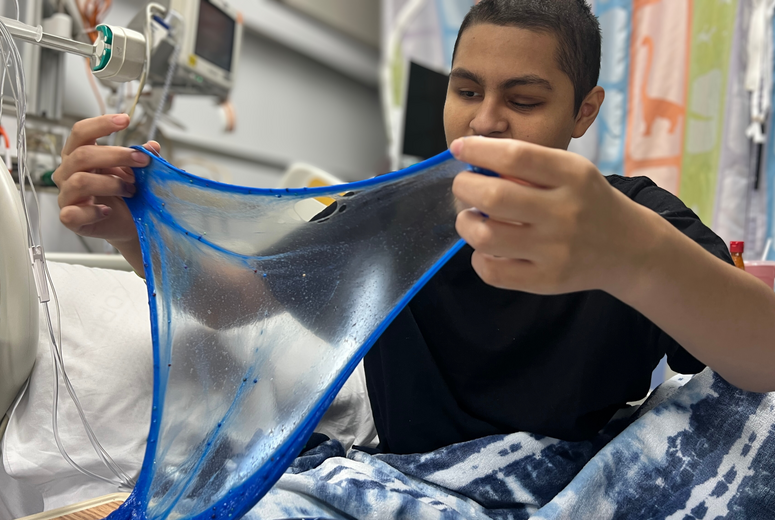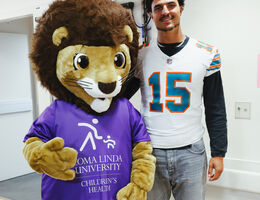

LLUCH patient Andrew, 14, made slime with Kaitlyn Briggs, a child life specialist
Loma Linda University Children’s Hospital has been awarded a $15,000 grant to launch an innovative project titled “Healing Through Play: Reducing Screen Time for Recovery and Growth.” This initiative will create screen-free experiences to help children thrive during extended hospital stays, as well as those with specific sensory, developmental, and cognitive needs.
The funding will support the purchase of interactive, screen-free toys and activities that encourage physical movement, cognitive engagement, and social interaction — critical components for healthy development and emotional resilience. Research published in Developmental Neuropsychology shows that interactive play helps reduce developmental regression and improve emotional well-being, making these resources essential in units such as Oncology, Intensive Care, and Cardiology, where hospitalizations are often lengthy.
Through this grant we have had the opportunity to provide activities with the intentional focus of incorporating cognitive, physical, or social engagement. Items and activities were selected based on development and whether it met at least one of the above criteria, with a specific focus on long-term patients.
“Hospital stays can be isolating for children, and excessive screen time only adds to that challenge,” said Kirsti Fowler, manager of the hospital’s child life department. “This grant allows us to provide experiences where kids can move, play, and connect — helping them maintain developmental milestones and to build a supportive community with others experiencing hospitalization.”
This project aligns with Loma Linda University Children’s Hospital’s commitment to whole person care, addressing not only the physical but also the emotional and spiritual well-being of every child. By reducing screen dependency and promoting interactive play, the hospital aims to strengthen resilience, reduce anxiety and depression, and improve both immediate quality of life and long-term outcomes for pediatric patients.




